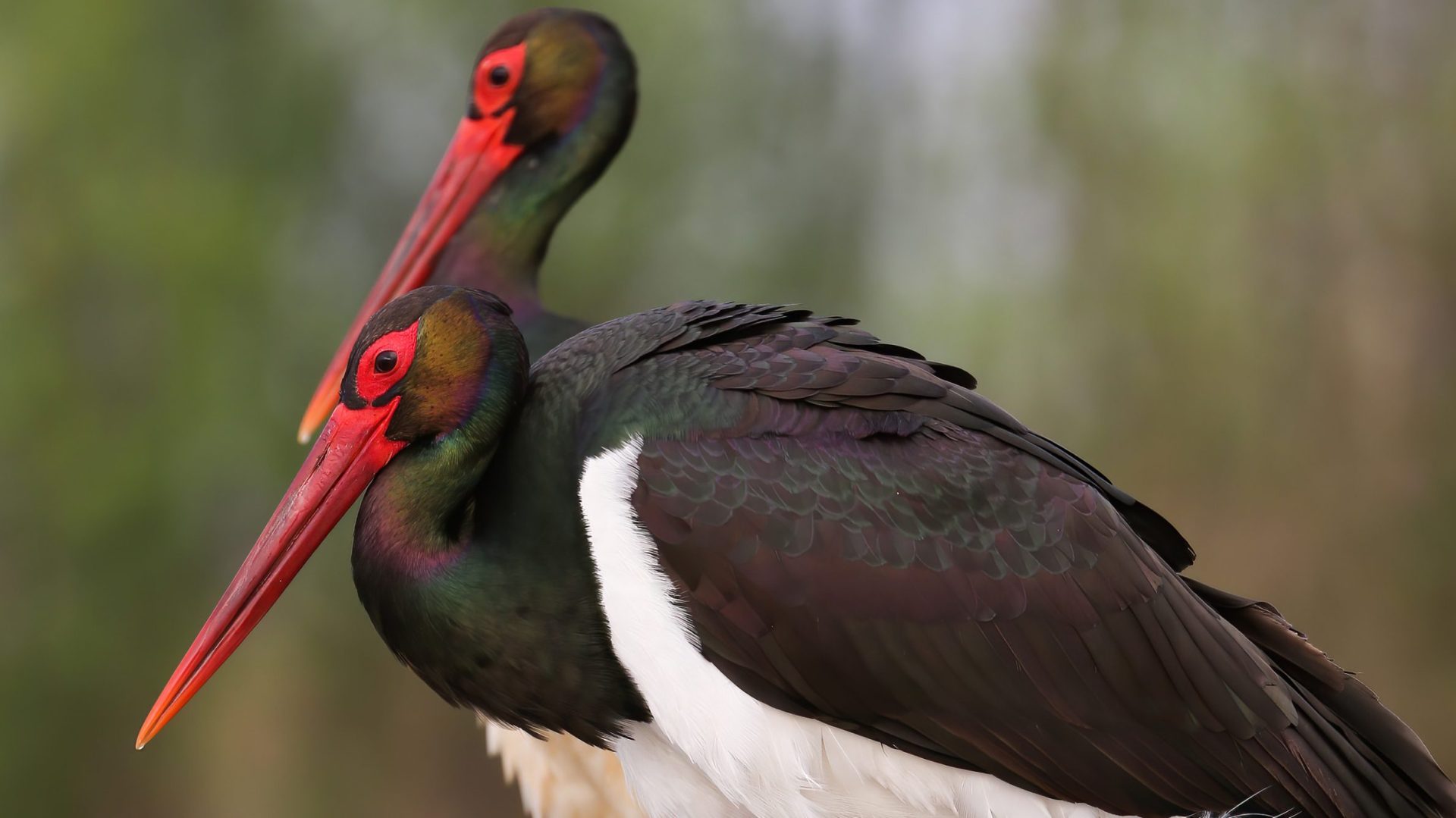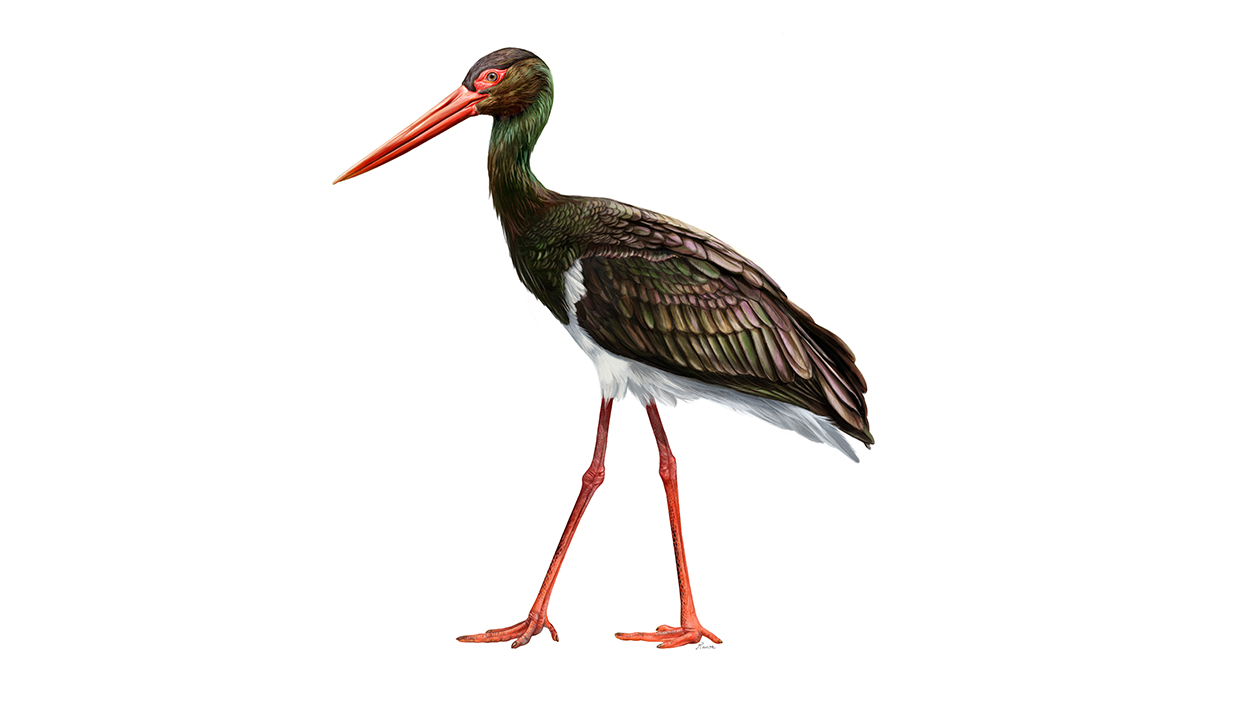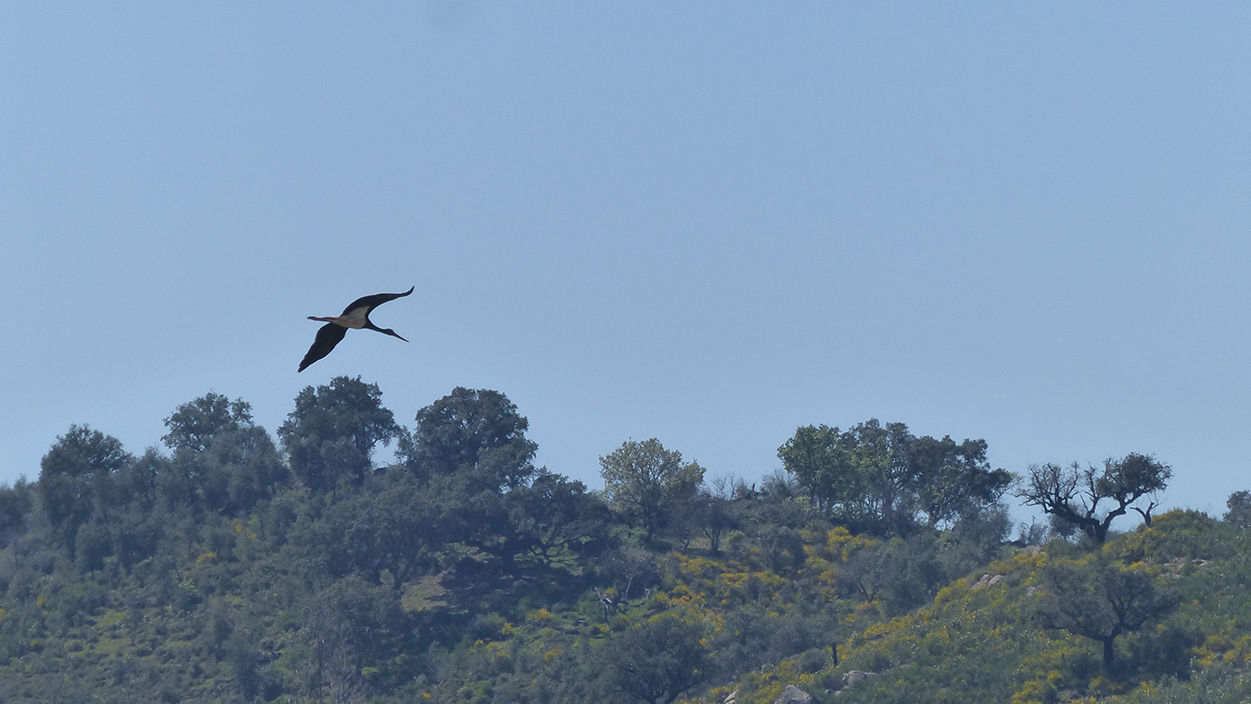In spring, migratory birds bolster the Portuguese black stork population and in the autumn, they leave the country for Africa. Some of them fly along the coast in an elegant manner, alternating between vigorous wingbeats and calmer moments when they glide, seemingly suspended in the sky.
Whether on land or in the air, the black stork (Ciconia nigra) is a species that is easy to identify due to its dark contrasting colours, size and beauty. The dark, glossy plumage on its upper body and neck and the white areas on its underside, along with its long, reddish legs and beak are distinctive features. In sunlight, its black feathers reflect a greenish-purple hue.
Despite its large size—its wingspan can extend to more than two metres—the black stork is very light and weighs no more than three kilos, which helps it to glide.
Much less common in Portugal than its “cousin” the white stork (Ciconia ciconia), the rare black stork is a bird that can be found both residing here and as a migratory species. According to the organization Aves de Portugal (Birds of Portugal), this sort of overlap is not very common.
During spring and early summer, the black stork lives and nests across Europe and much of Asia. As autumn approaches, most of the population flies south to spend the winter in warmer climes. Some of them, however, remain all year round in Portugal and also in Spain. Globally, this overlap between residents and migrants is only observed on the Iberian Peninsula and in southern Africa.
Thus, at the end of September and beginning of October, many black storks that have nested in Portugal and other European countries fly towards Sub-Saharan Africa. Although Gibraltar is the preferred spot for crossing the Mediterranean Sea, some deviate from this route and can be seen in Portugal either stopping or flying across the sky. During this season, they can be seen mainly along the coast: Sagres is one of the best places to see this and other migratory birds according to SPEA – The Portuguese Society for the Study of Birds.
The native ones live mainly in the inland part of the country and the migratory ones nest mainly in the areas surrounding three large rivers, the Douro, the Tagus, and the Guadiana, typically in the parts straddling the border with Spain. Its preference for quiet areas with an abundance of water—rivers, streams, ponds, and dams—is also justified by its diet which, although it contains insects and small mammals, such as small rats and other birds, is rich in fish, crustaceans, and amphibians.
The black stork is a shy bird and it nests in steep areas and in large trees with vast canopies, from cork oaks (Quercus suber) and stone pine (Pinus pinea) to holm oaks (Quercus rotundifolia) and some eucalyptus, pine, and other oak trees. Females lay three to five white eggs, which they incubate for 30 to 40 days. The chicks remain in the nest until they can fly and are fed for just over two months. After this time, the parents leave the nest and the chicks behind.





